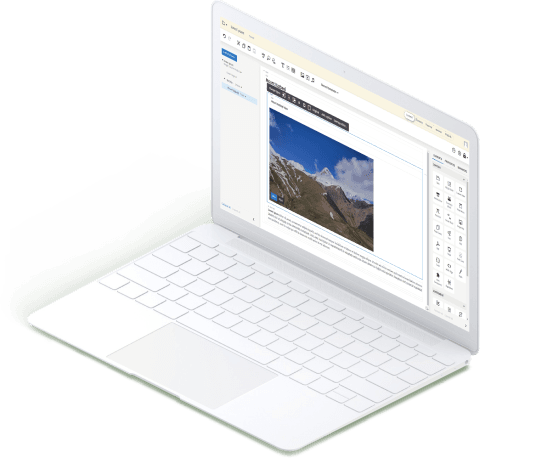
Nations around the world have had to switch to distant learning models almost overnight and, according to David Corke—Director of Education & Skills Policy for the Association of Colleges (AOC)—the future of learning, post-pandemic, will be “more blended and digitally-enabled than it was before”. This presents a big opportunity for the development of educational technology and software development which supports learning in all its forms—be it pre-school, Degree-level education or workplace training.
According to Deloitte, the education market in China alone is predicted to be worth $715 billion by 2025. So, which educational tech trends look set to become part of the new normal?
The five EdTech tools revolutionising learning
Up until the start of this year, our educational setup had remained the same for generations. Teachers stood at the front of classrooms and lecture halls imparting one-way knowledge to note-scribbling students, with little changing even in the wake of the Internet.
Since global lockdowns came into play, however, teaching with technology has become an absolute necessity. Schools have been forced to close and examinations have had to go online, and EdTech has pioneered new ways for students and teachers to collaborate and share materials online. Here are some of the key technologies pioneering new ways of learning.
1. IoT
Connected devices had already been implemented in many school settings before the pandemic hit. But now, connected devices such as laptops and tablets are enabling students to access learning materials from their own homes, with IoT applications like Learning Management Systems (LMS) making syllabus’ available for access from virtually anywhere.
Moving beyond COVID, the IoT will facilitate better collaboration between classes, different year groups and across higher learning campuses, paving the way for a more fluid way of learning than we’ve been accustomed to previously.
2. VR/MR/AR
According to Adobe, immersive learning experiences lighten the cognitive load, while also motivating students to grasp information more fully. Virtual, mixed and augmented reality environments have huge potential within learning because they change the context in which information is delivered and allow students to gain “hands-on”—so to speak—experience.
The relevance of virtual environments is even more significant in the wake of global school closures, prompting the education sector to consider the long-term application of virtual environments where physical classrooms aren’t an option.

Benefits of teaching with VR/MR/AR tech include:
- It creates a sense of space - offering students first-hand experience of what it’s like to walk the streets of ancient Rome, for example.
- It promotes interactivity - humans learn better by doing. Employing virtual reality within a classroom setting turns the passive action of reading instructions into the active task of exploring a scenario, while also fulfilling our need for visual and emotional experiences.
- It fosters creative thinking - as well as delivering more meaningful learning, VR, MR and AR tools and apps, in which students can design and experiment with virtual chemicals and proteins for example,—can seriously boost creative thinking and problem-solving.
- It cost-effectively scales learning - VR devices are relatively small and inexpensive in comparison to installing a science lab, for example, within a school setting, yet they can deliver the same practical learning experience.
3. Artificial Intelligence
According to an Artificial Intelligence Market in the US Education Sector report, AI in US education is predicted to grow by almost 46% between 2017 and 2021.
But teaching with AI technology isn’t about robots delivering lesson plans. Instead, it will serve a support function, allowing teachers to take time away from admin tasks to spend more time working with students.
AI can facilitate “global classrooms” through tools like Presentation Translator for Powerpoint, which subtitles live teacher presentations for students to watch from anywhere in the world. This is hugely relevant in the current pandemic, but it also opens up the possibility of globally-connected classrooms beyond this.
Furthermore, AI applications are now focusing on differentiation and personalisation within learning—signalling an important shift from a “one-size-fits-all” model to an approach which is attuned to the needs and capabilities of the individual student. This is particularly compelling when you consider the unique needs of pupils with learning difficulties or sight/hearing impairments.
4. Data-driven personalisation
To echo the point about AI’s role within the classrooms of the future, one of the key changes we’ll likely see in education is a tailoring of the curriculum and key milestones to the needs of the individual learner.
Data science is already a powerful tool for understanding the needs of wants of users within the industry, so it follows that it will become more and more relevant from our early years. It’s also an important tool for monitoring where students are at in their learning while they are unable to physically attend a classroom.

5. The Cloud
Aside from the obvious benefit of making educational resources more readily available for remote learning or otherwise, cloud-based technologies are a powerful enabler of creativity and self-expression. Further, working in the cloud helps safeguard data protection in a time when personal information is so heavily valued and vulnerable.
The Cloud allows pupils to access a plethora of applications and programs to find engaging ways of presenting their work—i.e. uploading video content or images, or collaborating on a document with their peers. This allows each student more authorship over their work while enabling teachers to customise assignments and employ blended learning and flipped classroom strategies for better results.
The Cloud has been particularly valuable during the lockdown, where schools have had to shift their lessons online. But moving beyond COVID, the time, space and resource-saving capabilities of cloud-based technologies could change the way we learn forever.
What’s the counter-argument to teaching with technology?
One thing that has become apparent through the global lockdowns is the technology gap between underprivileged learners and their privileged peers. Remote learning can really only work for those who have access to connected technologies.
There’s also a need to acknowledge that teaching with technology should enhance, rather than replace, traditional teaching methods. Tech can be a powerful ally in helping teachers reallocate their time. So that they can get back to delivering engaging lessons and one-on-one feedback and move away from labour-intensive admin.
ELEKS helps clients within the education sector and beyond employ innovative technologies to evolve in a fast-changing world.
Find out more about how we could help you meet the demands of tomorrow, today. Get in touch.

Related Insights







The breadth of knowledge and understanding that ELEKS has within its walls allows us to leverage that expertise to make superior deliverables for our customers. When you work with ELEKS, you are working with the top 1% of the aptitude and engineering excellence of the whole country.

Right from the start, we really liked ELEKS’ commitment and engagement. They came to us with their best people to try to understand our context, our business idea, and developed the first prototype with us. They were very professional and very customer oriented. I think, without ELEKS it probably would not have been possible to have such a successful product in such a short period of time.

ELEKS has been involved in the development of a number of our consumer-facing websites and mobile applications that allow our customers to easily track their shipments, get the information they need as well as stay in touch with us. We’ve appreciated the level of ELEKS’ expertise, responsiveness and attention to details.

